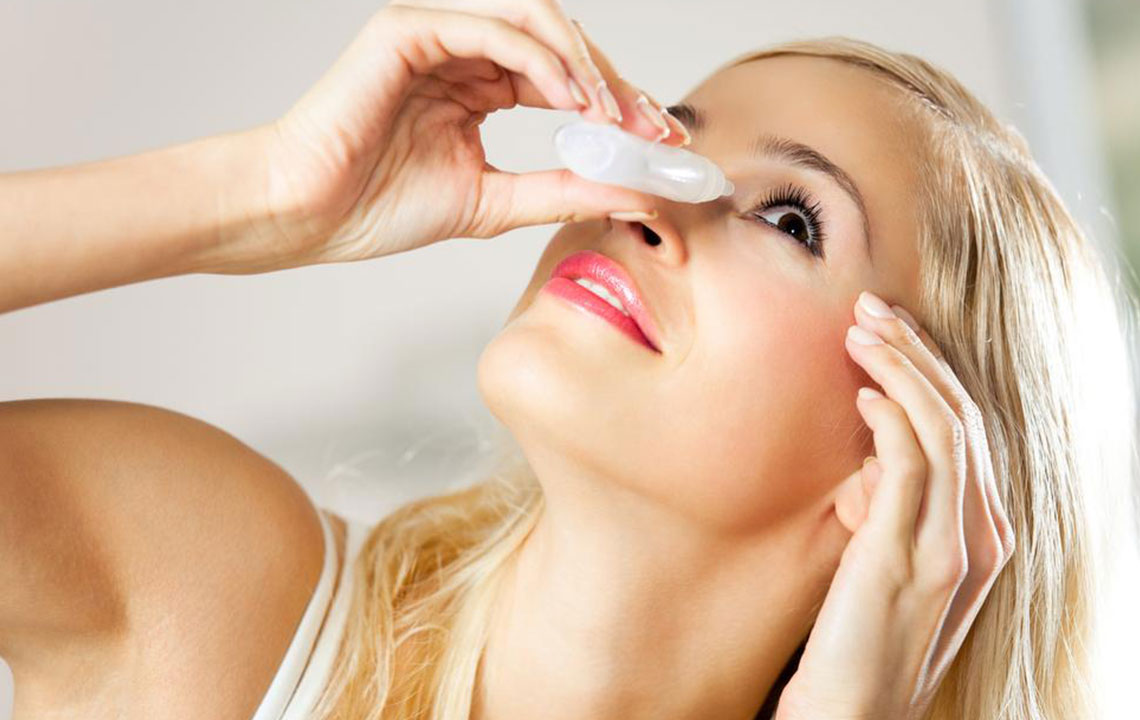Top 5 Ways to Treat Dry Eyes
Have you ever come across an instance where you are reading a book or having a conversation with your friend, but your eyes are filled with tears? A sudden drop of tear can puzzle people around you. Often termed as watery eyes, in some cases, this problem can go on for a long time. However, did you know that these tears signal a disease which can be cured as well?

Basically, these tears help in providing moisture and lubrication so that you can see and keep the peepers comfortable. So, what are these tears? Even though it looks like water, tears are a mixture of water for moisturizing, oil for lubricating, antibodies for guarding against infection, and mucus for spreading evenly.
When tears fail to offer an adequate amount of moisture, you will notice different symptoms such as itchiness, blurring of vision, a gritty feeling, discomfort as if something has fallen into your eyes and sensitivity towards the light. In most cases, dry eye disease leads to the formation of too many tears. This confusing condition is termed as reflex tearing and happens for lack of moisture which irritates the eyes. It helps in sending a distress signal through the nervous system for the required amount of lubrication. As a response, the body system sends a flood of tears in order to mitigate the distress. This is quite similar to the situation of a pinch of sand falling in your eyes. Let’s take a look at the causes and the treatments.
Common causes of dry eye disease
At times, there is a lack of balance in the tear flowing system of the eyes. In other cases, heating systems and air conditioners can also dry out the eyes. The most significant causes of dry eye disease are listed here.
- When one age, dry eye disease is the most commonly seen in women after menopause
- Side effects of certain medicines, particularly antihistamines
- Diseases like rheumatoid arthritis, collagen vascular diseases, Sjogren’s syndrome, and others that badly affect the ability to produce tears
- Other ailments or problems which do not allow your eyelids to close in the normal way
Top ways to treat dry eyes
There are various treatment options for dry eye disease, and your doctor will determine which method would be best suited for your condition. Here are some of the most common treatments administered for dry eye disease.
Ointments and artificial drops
In most cases, doctors recommend this treatment and countless variations of drops and ointments are available over the counter. However, it is important to understand that a single product would not work for everyone, and therefore, you may have to try a few for figuring out what’s right for you. If your eyes tend to dry out when you are asleep, you will have to use a thicker product such as an ointment during the night. Some people even consider wearing airtight goggles during the night which helps in creating a little moisture chamber for the eyes.
Temporary punctual occlusion
Sometimes eye experts recommend closing the punctum or the ducts which are responsible for draining the tear from the eyes. The treatment may start with a temporary plug crafted for dissolving over time. Based on its efficacy, your doctor can determine whether it can work for you.
Non-dissolving punctual plugs
In case a temporary punctual occlusion starts showing desired results, your doctor may choose to move to long-lasting ones. Sometimes, he may choose a process known as cautery. You will be given a drug which relaxes you and then uses special equipment for burning the opening shut. The resultant scar forms a permanent plug, and it increases the level of tear formation by blocking the pipe through which your tears go to the nose. Tear plugs can be removed effortlessly, but sometimes they come out on their own. The non-dissolving punctual plugs are one of the best treatments for dry eye disease.
Lipiflow
This is yet another medical device that uses heat and pressure for unclogging blockage of glands on the eyelids. These glands help in producing the oil in tears and keep the eyes moist while ensuring that the tears do not evaporate.
Testosterone cream/eye drop
Even though it is very rare, dry eye disease can stem from a lack of testosterone in the oil glands present in the eyelids. Your doctor may give you testosterone cream or eye drops which you will have to apply on the eyelids so that glands can work better.
With these treatment options, you will easily get rid of dry eye disease. You should also take proper diet with the required nutrition to keep the disease at bay.